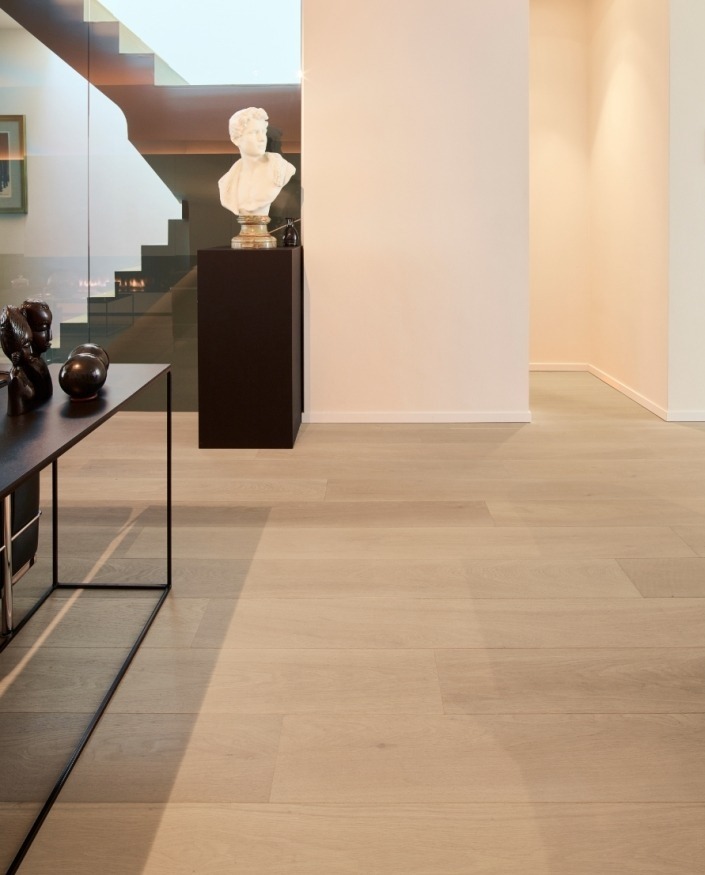
Select the correct flooring adhesive
Does your subfloor meet all the requirements and have you applied the correct primer? OK, then you can now glue your new wooden floor to the subfloor. But which glue to choose? There are so many different types of flooring adhesive on the market that it's not always easy to choose the one that is best for your wooden floor. We can help you to get an overview of the possibilities.
Choose your glue according to the following parameters:
- the nature and flatness of the substrate
- the properties of the wooden floor: the type of wood, the width, thickness and the type of components, the wood’s sensitivity to moisture, the presence of a finish layer, ...
- the presence of underfloor heating
- the properties specific to the installation
The different types
— of flooring adhesive
(MS) POLYMERIC ADHESIVES AND DERIVATES
An MS Polymer adhesivefor wooden flooring is a single component glue based on hybrid polymers. This type of glue is without doubt the easiest to use and delivers the best results. It can be used for the direct elastic bonding of floors made from various types of wood to cement-bonded or wooden subfloors. With these adhesives you can also glue wooden flooring to tiles or other non-absorbent defatted and soap-free surfaces, e.g. natural stone or glass. MS polymer adhesives give a permanently elastic bonding even when used with underfloor heating.
POLYURETHANE ADHESIVES (TWO COMPONENT ADHESIVES)
Polyurethane Adhesive (PU glue) is created from a reaction between isocyanate and alcohol. The product of this reaction is a urethane. The bond comes about because water reacts in the air (= polymerizes) with urethane.
If the adhesive surface is deprived of air (for example because the adhesive is too thick or the materials used do not let the air through), then the adhesive does not cure. The moisture from the air can no longer reach the adhesive. In order to solve this problem sometimes a curing accelerator is added or a 2K (two-component) polyurethane adhesive is applied.
The two components of this adhesive must be mixed carefully prior to use. The mixture can then be used for bonding wooden floors onto concrete or cement screeds without a subfloor. This type of glue ensures a lasting light-elastic bonding of your parquet floor.
DISPERSION ADHESIVES (CLASSIC WHITE WOOD GLUE)
In a dispersion adhesive, the adhesive particles are spread evenly as droplets in a liquid. Over time, the liquid evaporates or is absorbed by the environment, so that only the solid adhesive particles remain.
This type of gluing is often used for installing mosaic parquet and narrow, short flooring strips onto absorbent and non-absorbent substrates. Dispersion adhesives are budget friendly but not suitable for all surfaces or installation techniques and certainly not recommended for wide and long boards.
ALCOHOL ADHESIVES
This type of adhesive is suitable for gluing narrow, short parquet strips onto absorbent substrates such as cement, concrete or wood floors. Alcohol adhesives can be used in appropriate circumstances, but are generally less suitable for the gluing Lalegno floors, because most of our floors are long and wide.




